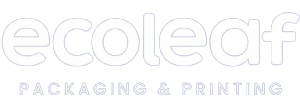Glossary
Sustainability Glossary
BACKYARD COMPOSTING
The controlled decomposition of organic food waste and yard trimmings in urban, suburban and rural backyards, which produces a nutrient-rich top soil. Composting is considered waste source reduction, not recycling, because the composted materials never enter the municipal waste stream.
BIODEGRADABLE
A material that will decompose into naturally occurring, harmless components over time with exposure to air, sunlight and/or moisture.
BIOMASS
Organic, non-fossil material that is available on a renewable basis. Biomass includes all biological organisms and their metabolic by-products, including forest and mill residues, agricultural crops and waste, wood and wood waste, animal waste, aquatic plants, and municipal and industrial waste.
BIOPLASTIC
Bioplastics are a form of plastics derived from renewable biomass sources, such as wood, vegetable oil, corn starch, pea starch or microbiota, rather than traditional plastic, which are derived from petroleum.
CARBON FOOTPRINT
A measure of the impact human activities have on the environment in terms of the amount of green house gases produced, measured in units of carbon dioxide. It is meant to be a useful measure for individuals and organizations to conceptualize their personal (or organizational) impact in contributing to global warming.
CLOSE-LOOP RECYCLING
The practice of collecting used materials from customers for remanufacture by the same firm or industry group.
COMPOSTABLE
A material that biodegrades substantially under composting conditions into carbon dioxide, methane, water and compost biomass. Compostable is a subset of biodegradable. The size of the material is a factor in determining compostability because it affects the rate of decomposition. A product that is “compostable” is one that can be placed into a composition of decaying biodegradable materials, and eventually turns into a nutrient-rich material.
CRADLE TO GRAVE
The full life cycle assessment (LCA) of a product or process, from the extraction of raw materials, through manufacturing and use, to final disposal. This assessment examines the product’s net environmental burden, including the consumption of raw materials and energy, emissions to air and water, and solid waste generation. Cradle to Grave can also refer to the responsibility a company takes for the entire life cycle of a product, service or program, from design to disposal or termination.
ECO-EFFICIENCY
An effort to achieve the best possible efficiency throughout the creation, use and disposal of a product or service. Eco-Efficiency simply means “doing more with less.” It is not a synonym for sustainability as it considers only the environmental and economic aspects of the product without regard for the social implications.
ENVIRONMENTAL IMPACT
Any change to the environment, good or bad, that wholly or partially results from industrial/manufacturing activities, products, services, land usage or natural events. Energy consumption, greenhouse gas (CO2-eq) production, toxicity and natural resources depletion are some of the key environmental impact areas.
END OF LIFE
The terminus of a product’s useful life and thus the beginning point for its reuse, recycling or permanent disposal.
GREENWASHING
A term used to describe the act of misleading consumers regarding the environmental practices of a company or the environmental benefits of a product or service.
INDUSTRIAL COMPOSTING
Similar to backyard composting but requiring industrial scale processes, such as higher heats and more controlled conditions, which allow for a greater variety of inputs, including: meat, bones, fats, bioplastics and food service paper-products.
LIFE CYCLE ASSESSMENT (LCA)
A set of procedures put in place to assess the environmental aspects and potential impact directly associated with a product, process or service system throughout its life cycle. Includes: 1) Compiling an inventory of relevant energy and material inputs and environmental releases 2) Evaluating their potential environmental impacts associated with the identified inputs and releases 3) Interpreting the results to help you make more informed decisions.
MOBIUS LOOP
The common nickname for the recycling symbol. The three arrows represent the main steps in the process: 1) The collection and separation of recyclable materials 2) The manufacturing of these materials into new products 3) The purchase and use of these recycled products.
POST-CONSUMER WASTE (PCW)
Materials or finished products, particularly paper and plastic, that have served their intended use and have been diverted or recovered from the waste stream. Post-consumer fibre materials include recyclables collected in commercial and residential recycling programs, such as office paper, cardboard, newsprint and packaging materials. Recovered office paper waste makes up the majority of post-consumer fiber content used in recycled copy and printing papers.
RECYCLABLE
A product or package that can be collected, separated or otherwise recovered from the solid waste stream for reuse.
RECYCLED CONTENT
The proportion, by mass, of pre- and post-consumer recycled material in a product or packaging. Some companies count only post-consumer content as recycled.
RENEWABLE RESOURCE
A resource that is replenished at a rate comparable or faster than its rate of consumption. Therefore, the resource will continue to be available for future generations.
SUSTAINABILITY
Meeting the economic, ecological and social needs of the day without impairing the chances or development of future generations.
SUSTAINABLE FOREST MANAGEMENT
The stewardship and use of forests and forest land in a way and at a rate that maintains their biodiversity, productivity, regeneration capacity, vitality and their potential to fulfill now and in the future relevant ecological, economic and social functions at local, national and global levels, and does not cause damage to other ecosystems.
TRANSPARENCY
An organization’s disclosure of their environmental, economic and social impacts in an effort to assure all players are working toward long-term sustainability goals. Corporate Social Responsibility (CSR) reports are often the delivery mechanism.
TRIPLE BOTTOM LINE (TPL)
An expanded baseline for measuring performance, adding social and environmental dimensions to the traditional monetary benchmark. Triple bottom line, or TBL, is often expressed through examples: People, Planet, Profit; or Ecology, Economy, Equality.

